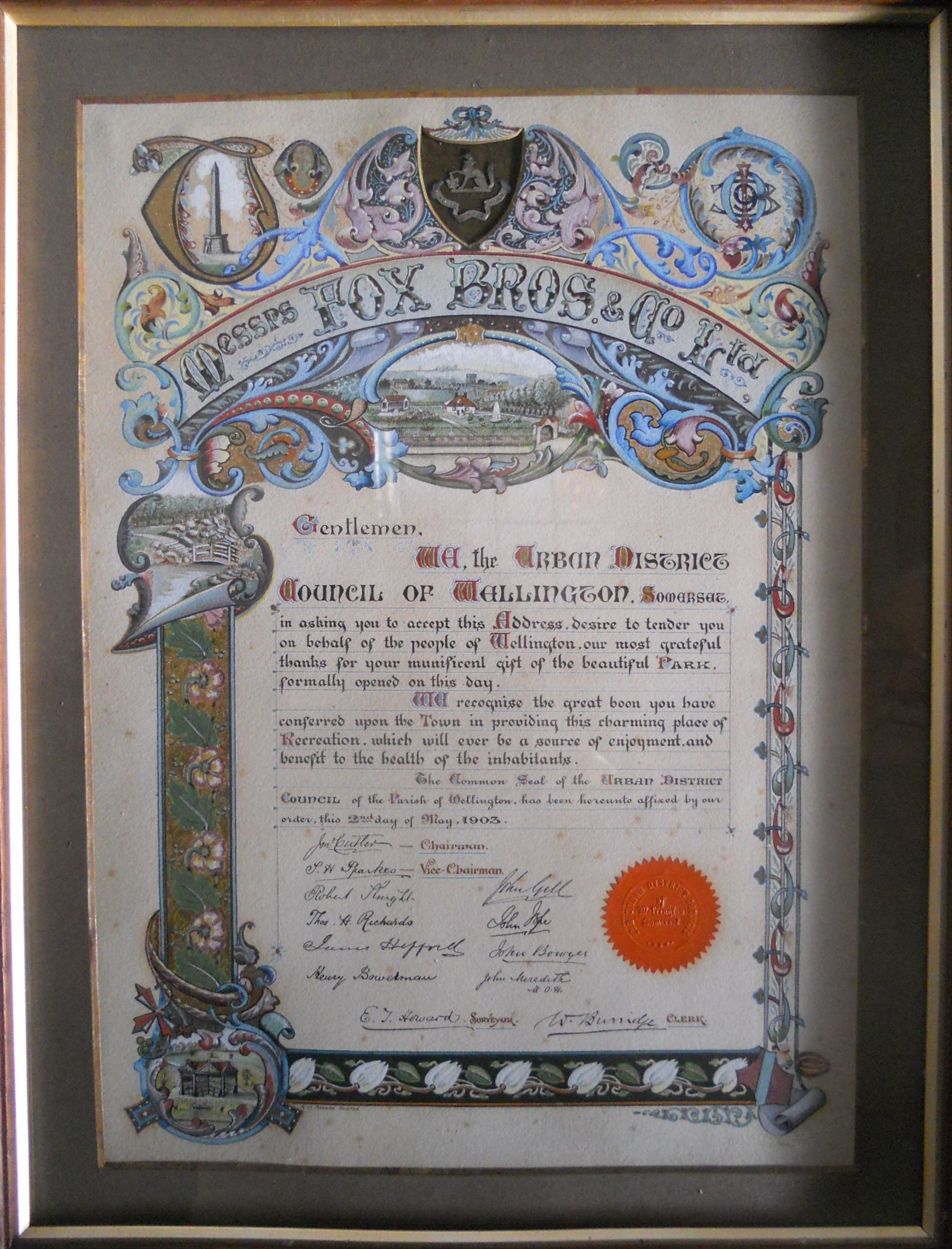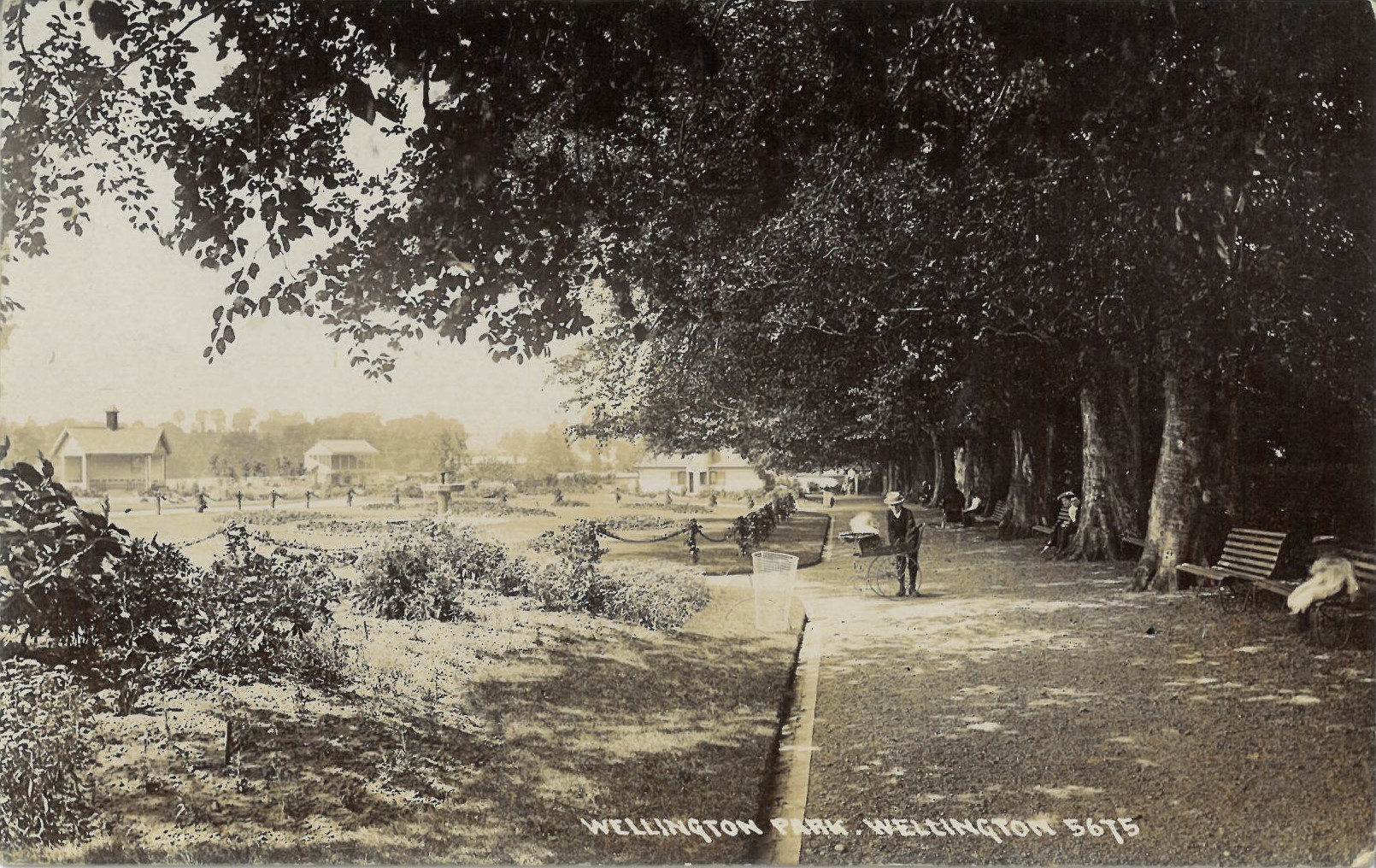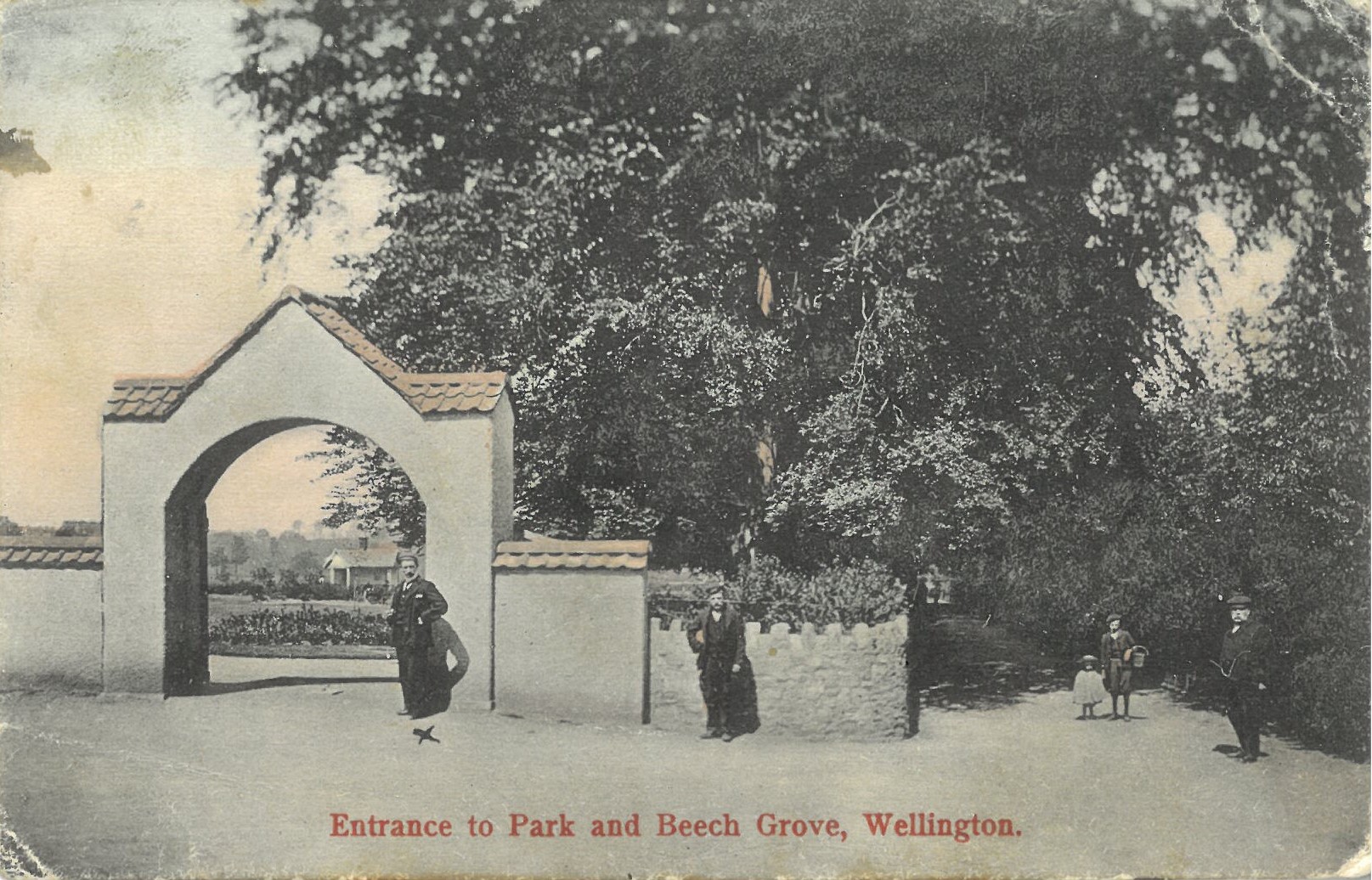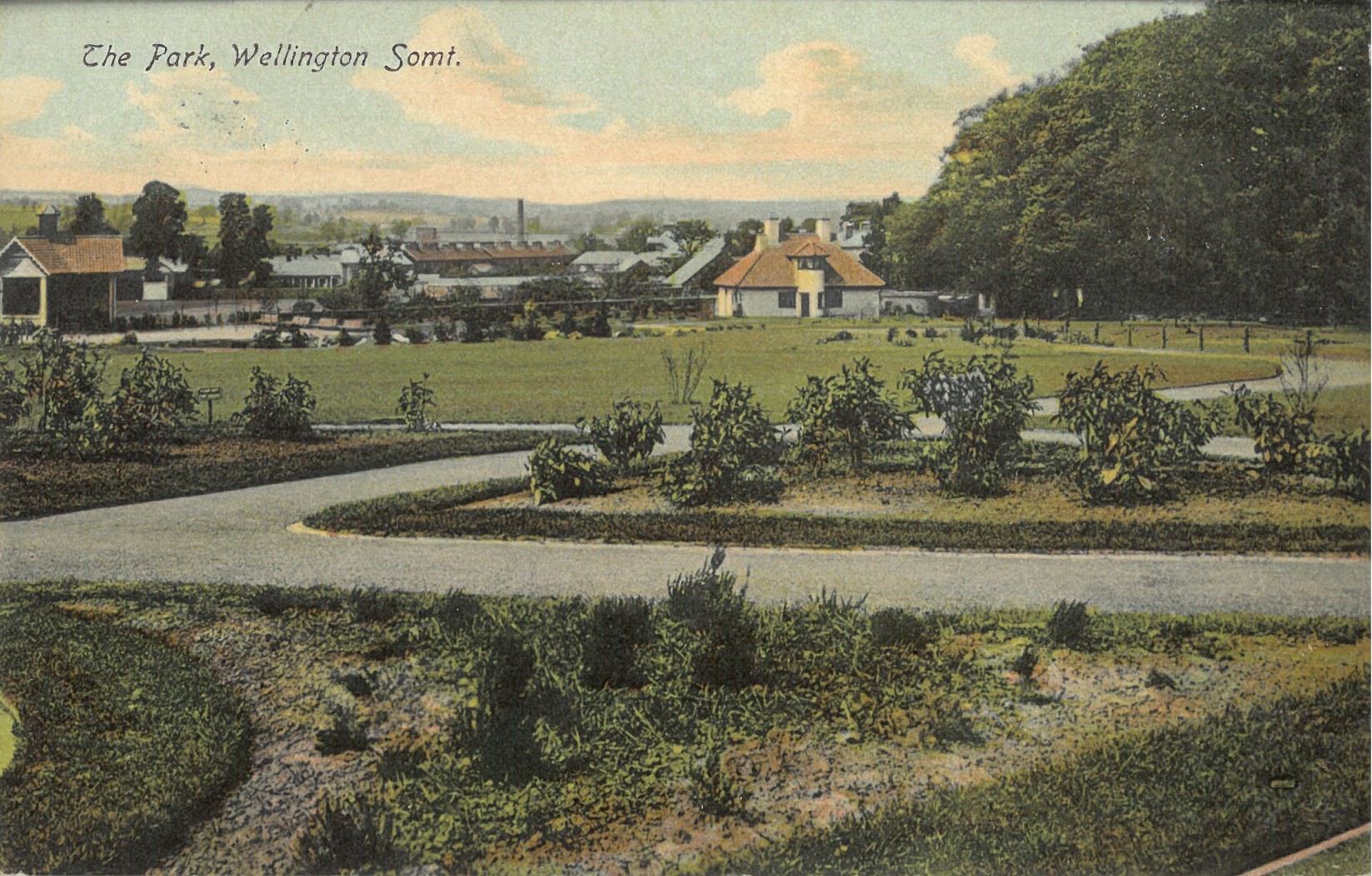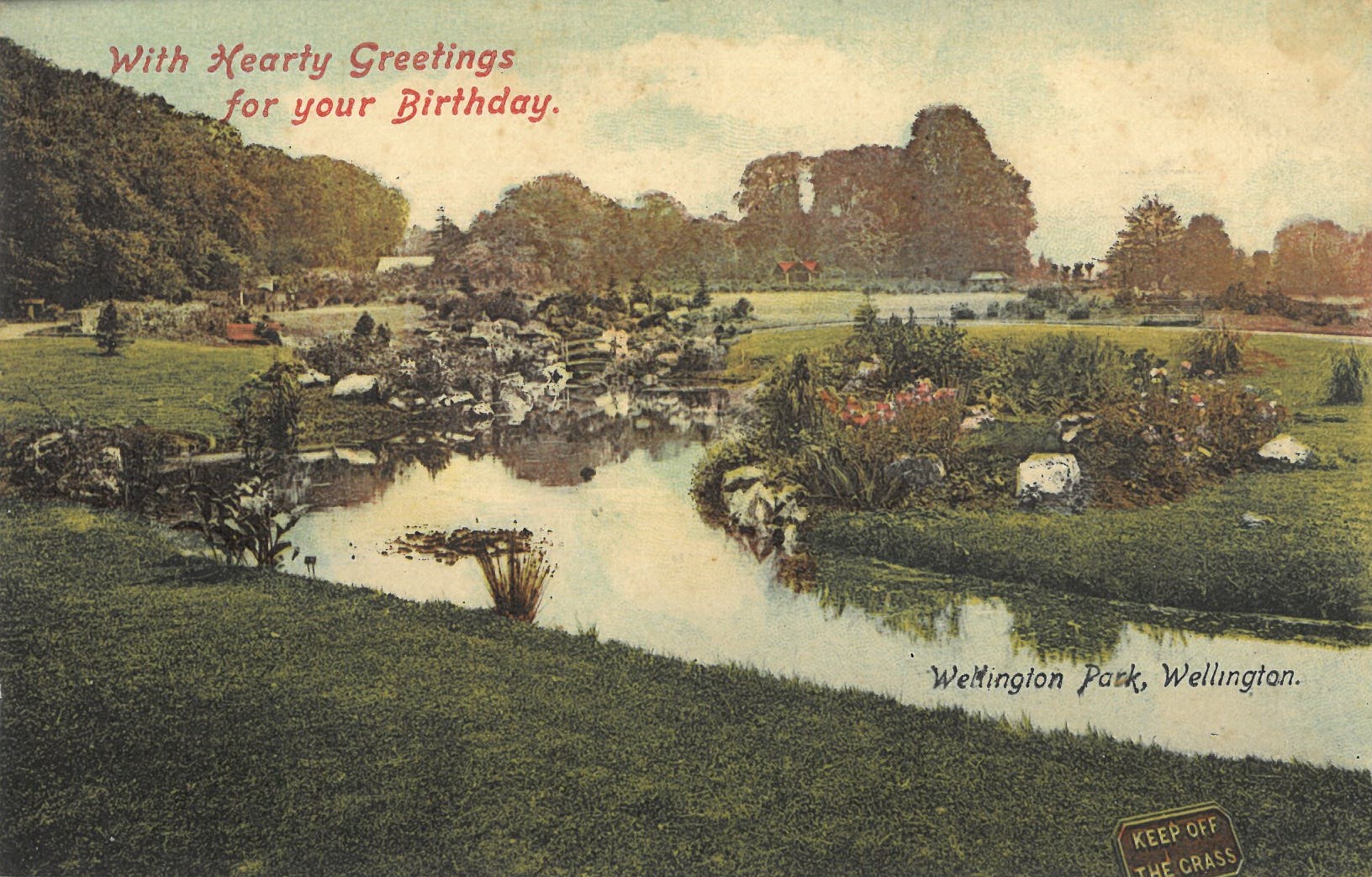History of Wellington Park
Early History
The layout of the ground prior to it being laid out as a park is shown on the 1st Edition Ordnance Survey map published in 1887. It comprised an open field lying between a large property called ‘The Court’ and what appears to have been a walled kitchen garden. ‘Beech Grove’, which formed the northeastern boundary of the field, provided a straight drive between these two features. With the exception of the Beech trees lining this drive, the field had no other distinguishing features.
Beech Grove is thought to be the original driveway to Wellington House, the mansion built for Lord Chief Justice Sir John Popham in the 16th century. The house was damaged by cannon fire during the Civil War and deemed not worth repair. It was subsequently destroyed.
Origins of the Park
On 6th February 1902, the Urban District Council received a letter asking what events had been planned to celebrate the forthcoming coronation of Edward VII. At a meeting of the council, a fortnight later, it was resolved to set up a Coronation Sub-committee.
At the beginning of March an anonymous letter published in the Wellington Weekly News, put forward the idea of creating a recreation ground for the town. Soon after, at a meeting of the Coronation Sub-committee, Mr W Sydney Price suggested that the creation of a recreation ground would be a suitable commemoration of the coronation. However, the proposal was dismissed by the committee on the grounds of cost.
But at the following meeting of the Coronation Sub-committee, on 20th March 1902, a letter from Wellingtons’ largest manufacturing company, Fox Bros. and Co. Ltd was read out, and they agreed to create and gift the park to the town of Wellington.


